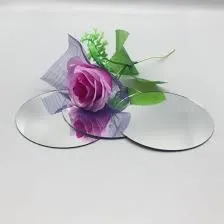

The Art and Innovation of Decorative Architectural Glass
Decorative architectural glass has emerged as a significant component in the world of modern architecture, transforming ordinary spaces into extraordinary works of art. This unique medium combines functionality with aesthetic appeal, offering architects and designers limitless possibilities in their creations. From stained glass windows to contemporary glass panels, decorative glass is employed in various ways to enhance both the beauty and utility of buildings.
Historically, glass has been used in architecture for centuries, primarily for its transparency and light-permitting qualities. Ancient civilizations, such as the Romans, used glass for decorative elements in their architecture, laying the groundwork for what would evolve into a sophisticated art form. The Middle Ages saw the advent of stained glass, a technique that imbued sacred spaces with vibrant colors and narratives. Cathedrals adorned with intricate stained glass windows became symbols of faith, beauty, and craftsmanship.
In contemporary architecture, decorative glass has experienced a renaissance, fueled by advancements in technology and design. Modern techniques such as digital printing, etching, and sandblasting have expanded the range of design options available to architects. These methods allow for the creation of custom patterns and images, enabling designers to incorporate artistic expressions that reflect the identity and vision of a space. The versatility of decorative glass means it can be utilized in various applications, including facades, partitions, skylights, and interior spaces.
One of the most striking features of decorative architectural glass is its ability to manipulate light. Depending on its texture, color, and thickness, glass can diffuse, reflect, or refract light, creating dynamic interactions within a space. For instance, frosted glass creates a soft, diffused light that promotes privacy while maintaining an open atmosphere. On the other hand, colored glass can cast vibrant hues onto surfaces, enriching the environment with dynamic patterns of light. This interplay between light and material can profoundly influence the mood and character of a space.

Sustainability is another critical aspect of decorative architectural glass. With the increasing focus on environmentally friendly design, glass manufacturers are developing energy-efficient products that contribute to sustainable building practices. Modern insulating and low-emissivity glasses not only reduce heat loss but also maximize natural light, decreasing reliance on artificial lighting. Furthermore, glass is a recyclable material, making it an eco-conscious choice for architects looking to minimize their carbon footprint.
The transformative potential of decorative architectural glass can be seen in numerous landmark projects worldwide. For example, the Glass Cathedral in California features stunning stained glass installations that accompany its striking architecture, creating an inspiring environment for worshippers. Similarly, the Museum of Islamic Art in Qatar showcases intricate glass art that reflects the rich cultural heritage of the region while providing a breathtaking entrance point for visitors.
Moreover, decorative glass is not limited to large-scale projects. Residential designs increasingly incorporate glass elements, such as glass railings, shower enclosures, and decorative glass partitions, enhancing the aesthetic appeal of living spaces. These elements can serve as focal points while also promoting openness and light flow, creating a harmonious living environment.
In conclusion, decorative architectural glass represents a fusion of art and science, pushing the boundaries of architectural design. Its ability to transform spaces, manipulate light, and promote sustainability makes it an invaluable resource for modern architects and designers. As technologies continue to evolve and the demand for innovative design grows, decorative architectural glass will undoubtedly play an even more pivotal role in shaping the built environment. Embracing this medium not only enriches our architectural landscape but also celebrates the timeless interplay between beauty and functionality.